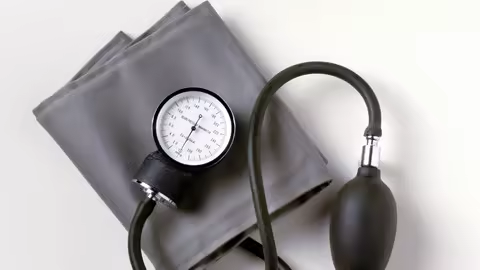
Free Download Udemy - Assessing Vital Signs
Published: 3/2025
MP4 | Video: h264, 1920x1080 | Audio: AAC, 44.1 KHz
Language: English | Size: 145.22 MB | Duration: 0h 31m
How to Assess Vital Signs
What you'll learn
Explain the difference between objective data and subjective data (signs and symptoms)
Identify which observations and readings are concerning and should be reported to someone right away
Demonstrate how to measure and record vital signs, height and weight, and other patient data
Explain the normal range for each vital sign
Requirements
None.
What is needed to take this course? Nothing but a willingness to learn and an interest in assessing vital signs!
You do not need a textbook or any special equipment or software for this course.
Description
In this course, students will learn how to properly take temperatures using different kinds of thermometers, how to take a pulse using a variety of methods, how to assess blood pressure, and other vital signs. Pulse oximetry and methods for properly measuring height and weight are discussed. This is for current or aspiring health care workers or for anyone serving as a care giver to a loved one. The vital signs of body function are Temperature, pulse, respirations, and blood pressure. These vital signs vary a little bit between normal limits, and they can be used to tell you how the person is responding to their treatment - and also if they are experiencing a life-threatening event. Any time vital signs change from a previous reading or are outside the normal range, report it immediately.If you dispense medications for your job or as a care giver, observation and reporting is a very important skill associated with medication administration. You need to be able to monitor the effects of the medications you have given, and in some situations you must know the resident's physical status before you give certain medications.The human body is capable of maintaining a balance of physical and general health, but when a change from physical or emotional stress takes its toll, the body will react.What is needed to take this course? Nothing but a willingness to learn and an interest in assessing vital signs! You do not need a textbook or any special equipment or software for this course.
Overview
Section 1: Introduction
Lecture 1 Introduction
Section 2: Observations, Signs, and Symptoms
Lecture 2 Observations: What Do You think?
Lecture 3 Observations, Signs, and Symptoms
Lecture 4 Observations: Knowing When to Report Your Concerns
Section 3: Dignity, Respect, and Quality of Life
Lecture 5 Vitals: Conveying Dignity and Respect
Section 4: An Introduction to Taking a Temperature
Lecture 6 Temperature Introduction
Lecture 7 Temperature: Basic Procedure
Lecture 8 Temperature: Comfort and Safety Considerations
Lecture 9 Temperature: Axillary
Lecture 10 Temperature: Temporal (Forehead) Method
Lecture 11 Temperature: Rectal
Lecture 12 Temperature: Oral Method
Lecture 13 Temperature: Tympanic
Lecture 14 Temperature: Post Procedure
Section 5: Introduction to Taking a Pulse
Lecture 15 Vitals Assessment: Pulse
Lecture 16 Pulse: Safety, Infection Control, and Comfort
Lecture 17 What to Know Before Taking a Pulse
Lecture 18 Pulse: Taking a Radial Pulse
Lecture 19 Pulse: Taking an Apical Pulse
Lecture 20 Pulse Post-Procedure
Section 6: Vitals: Respirations
Lecture 21 Normal Respiratory Rate
Lecture 22 Counting Respirations
Section 7: Vitals Assessment: Blood Pressure
Lecture 23 Introduction to Blood Pressure
Lecture 24 Measuring Blood Pressure
Lecture 25 Blood Pressure: First Steps
Lecture 26 Blood Pressure: Two Methods
Lecture 27 Blood Pressure: Completing the Measurement
Lecture 28 Blood Pressure: Last Steps
Section 8: Vitals: Pulse Oximetry
Lecture 29 Assessing Oxygen Saturation
Section 9: Assessing Height and Weight
Lecture 30 Assessing Height and Weight
Section 10: Communicating Across the Team
Lecture 31 Effective Communication with Providers
Section 11: Putting it All Together
Lecture 32 Putting it All Together
Lecture 33 Revisit Points to Ponder
Section 12: Final Exam
This course is appropriate for anyone currently working in health care and wishing to expand their skills, anyone considering a career in health care, or anyone serving as a care giver for a loved one.
Homepage:
Code:
Bitte
Anmelden
oder
Registrieren
um Code Inhalt zu sehen!
Recommend Download Link Hight Speed | Please Say Thanks Keep Topic Live
Code:
Bitte
Anmelden
oder
Registrieren
um Code Inhalt zu sehen!